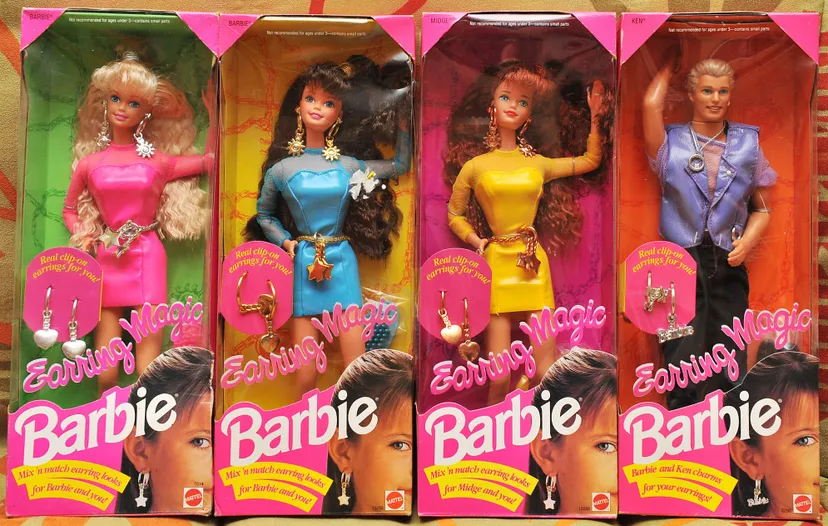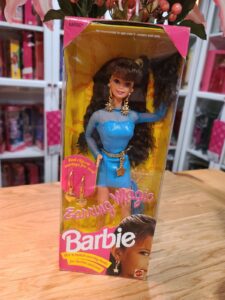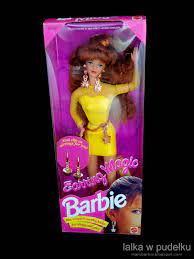When Mattel released Earring Magic Ken in 1993, they had no idea he would spark one of the most surprising and memorable reactions in toy history. Dressed in flashy clothes, with a stylish earring and bold jewelry, this version of Barbie’s long-time boyfriend didn’t just look different—he created waves far beyond the toy aisle.
At first glance, Earring Magic Ken seemed like just another attempt to keep up with 90s fashion trends. But almost overnight, he became an unexpected symbol in the LGBTQ+ community. His story is a strange, funny, and meaningful chapter in pop culture—and it all started with a simple makeover.
The Barbie Makeover Era
In the early 1990s, Barbie was everywhere. She had careers, cars, and an endless wardrobe. But Ken? He was stuck in the background. To many kids, he looked outdated. Mattel decided it was time to give Ken a new, more modern look. This was the era of glitter, bold colors, and big style. The design team wanted Ken to be fashionable—cool, even.
So they created the “Earring Magic” line. Barbie, Skipper, and others got shiny new outfits and jewelry. But it was Earring Magic Ken who stood out the most. He wore a lavender mesh shirt, purple pants, and a silver vest. Around his neck was a chunky chrome ring on a necklace, and in his ear was a single stud earring.
To the design team, it all looked trendy. To many others, it looked very familiar—but for a different reason.
A Style With a Hidden Meaning
When Earring Magic Ken hit the shelves, something unexpected happened. Members of the gay community noticed that Ken’s outfit looked strikingly similar to what many gay men were wearing in club scenes at the time. The mesh shirt, the necklace, the slick hair—it wasn’t just stylish. It was deeply connected to gay fashion in the 90s.
One detail stood out the most: the silver ring on his necklace. To many adults, it looked like a “cock ring”—a piece of adult wear often used in gay subculture. Mattel, likely unaware of this meaning, had included it as just another cool accessory. But now, Ken was being seen in a completely new light.
The media caught on quickly. Articles popped up with headlines like “Ken Comes Out?” and comedians made jokes. But in the middle of all the laughter and shock, something else happened: the LGBTQ+ community embraced the doll.
The Unexpected Icon
Gay men across the country rushed to buy Earring Magic Ken. Some bought him as a joke, others as a form of pride. He became a collector’s item almost overnight. This version of Ken, even if created by accident, represented a small slice of visibility in a world that rarely included LGBTQ+ people—especially not in children’s toys.
For many, Earring Magic Ken became a light-hearted but powerful symbol. He was never meant to be a queer icon, but he was welcomed as one. And for a brief moment, it felt like Ken was proudly standing in a space where he’d never been before.
Mattel, however, didn’t see things the same way.
A Swift Disappearance
Once the controversy began, Mattel moved quickly to remove Earring Magic Ken from shelves. They didn’t issue an official recall, but they quietly ended his production. In total, he was only available for a few months. The company didn’t want to be seen as promoting adult themes in a children’s product—even if the meaning had been unintentional.
Despite his short shelf life, Earring Magic Ken had already made his mark. He became a pop culture moment that people still talk about decades later. And while Mattel never addressed the full story, the doll’s legacy grew beyond what anyone could have imagined.
Earring Magic Ken and the Power of Visibility
What makes the story of Earring Magic Ken so powerful isn’t just the misunderstanding or the flashy fashion. It’s what he came to represent. At a time when LGBTQ+ characters were mostly absent from TV, film, and mainstream media, a mass-produced toy accidentally stepped into that space.
Representation doesn’t always come in expected ways. Sometimes it happens by accident—through a mesh shirt and a chrome necklace. But for people who rarely see themselves reflected in the world around them, even accidental representation can feel meaningful.
Earring Magic Ken reminded people that visibility matters, even when it’s unplanned.
More Than a Collector’s Item
Today, Earring Magic Ken is considered a collector’s treasure. His value has increased, not just because of rarity, but because of what he symbolizes. He appears in books about gender and pop culture, in university lectures, and in online videos that tell his strange and fascinating story.
He’s a reminder that culture is complex, that fashion holds meaning, and that even a toy can be part of something much bigger than itself.
Conclusion: A Doll, a Moment, a Message
Earring Magic Ken was created to be stylish and trendy. What he became was a symbol—of misunderstanding, yes, but also of visibility, humor, and identity. He started as just another version of Barbie’s boyfriend, but ended up as one of the most talked-about dolls in toy history.
His story teaches us something important: sometimes, cultural change comes from the most unexpected places. A fashion choice, a design detail, or even a plastic accessory can open up conversations and connect with people in powerful ways.
So while Earring Magic Ken may have vanished from store shelves quickly, his legacy still shines—just like his necklace.








dqbetd
THANXS